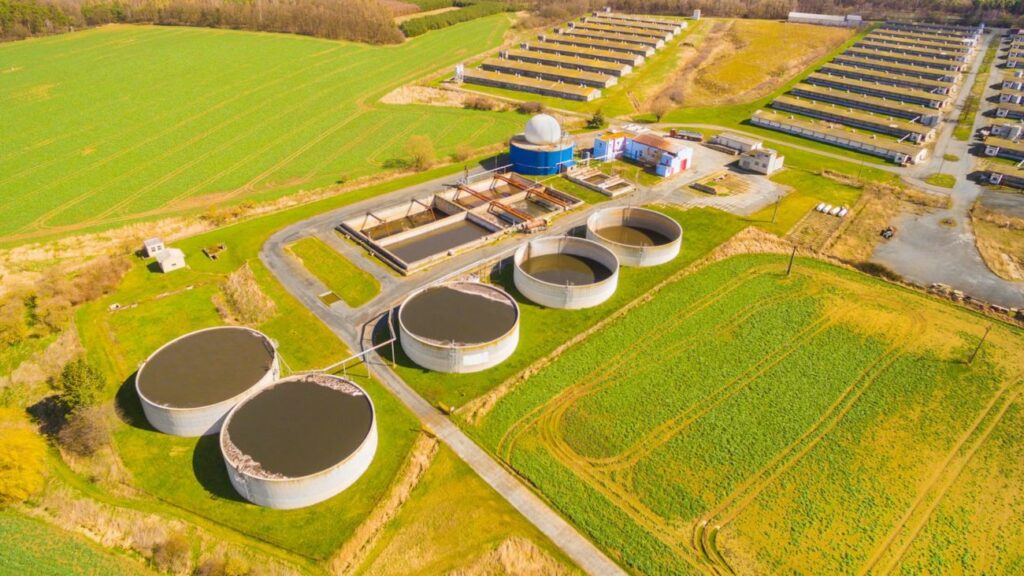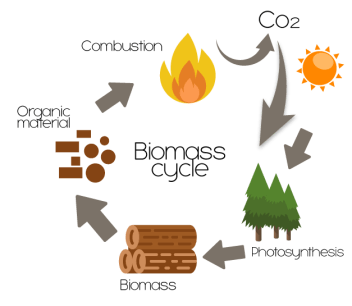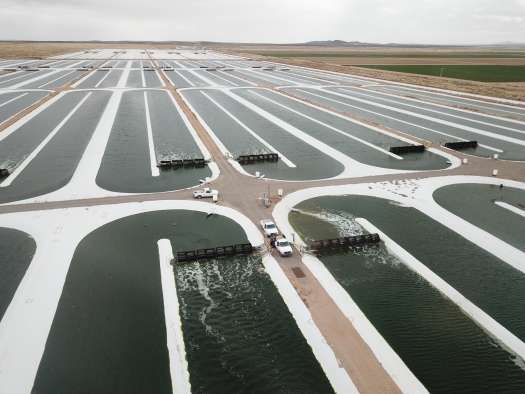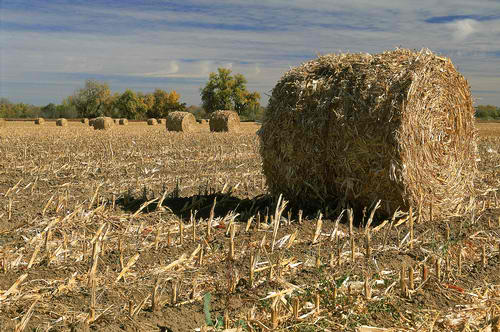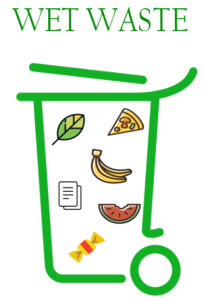Any material coming from plants or other living organisms on the face of the planet is considered biomass. Now, some of this biomass depending on its source could be utilized to produce energy by burning or digestion. Such biomass energy examples include wood, energy crops, and different sorts of waste such as human and animal, agricultural, etc.
Biomass could be considered as one of the renewable sources of energy when it comes from a sustainable source where it is reproduced as fast as it is consumed for power generation. Therefore, in a general sense, it could come from a waste source or a bio source specifically intended to produce biomass to be used for energy production.
You can find the biomass energy examples provided for you in the following lines of this article. Here at Linquip, we do all we can not only share the knowledge helpful for our customers to understand their needs better but also assist in finding the best solutions conveniently.
Wood
First up in our list of the different biomass energy examples is wood. This is the main source of biomass that power companies use to generate electricity. It can be burnt to produce steam which can then drive a turbine to generate power.
The use of wood to generate power is considered carbon neutral because growing trees absorb carbon dioxide and then releases it back into the atmosphere when burnt. Therefore, it is far more environmentally friendly than using fossil fuel sources such as coal, oil, and gas.
Biomass often includes the different wood types described below, but in theory, you can consider any type of wood to be a source of biomass.
Wood can be used in the form of logs, woodchip, and wood pellets in wood/pellet burning stoves or woodchip/pellet boilers for space and water heating. Logs and pellets are generally suitable for use on a domestic scale. Woodchips are generally only used in larger boilers, such as those used in schools, community buildings, and offices. On a larger scale, wood can also be used for the production of electricity. The main method of doing this is a combustion plant (where the material is burned to produce steam). However, there are two other possibilities:
- Gasification (where the material is heated in such a way that gases are given off).
- Pyrolysis (where the wood is heated in the absence of oxygen to produce a bio-oil liquid with some charcoal and gas).
Tree Crops
One of the biomass energy examples is to be explained later.
These are fast-growing tree crops such as willow and poplar that are specially grown for the biomass industry. They are then harvested and sold to power companies that burn the crop instead of traditional fuels such as coal and oil.
Short-rotation woody crops are fast-growing hardwood trees that are harvested within 5 to 8 years of planting. These include hybrid poplar, hybrid willow, silver maple, eastern cottonwood, green ash, black walnut, sweetgum, and sycamore. Many of these species can help improve water and soil quality, improve wildlife habitat relative to annual crops, diversify sources of income, and improve overall farm productivity.
- Willow and poplar are grown on a Short Rotation Coppice (SRC) system. Using this system the trees can be cut down to ground level every 3-4 years. The wood produced can then be chipped for use in a woodchip boiler or a combined heat and power (CHP) plant.
Wood Processing Wastes
Wood processing yields byproducts and waste streams that are collectively called wood processing residues and as one of the biomass energy examples have significant energy potential. For example, the processing of wood for products or pulp produces unused sawdust, bark, branches, and leaves/needles. These residues can then be converted into biofuels or bioproducts. Because these residues are already collected at the point of processing, they can be convenient and relatively inexpensive biomass energy examples.
When wood is used in manufacturing, it often produces a lot of waste. This can include anything from chunky offcuts to wood clippings and sawdust. Most manufacturers will have a process in place whereby their wood waste is collected, stored, and then sold to a reprocessing company which might then sell this to the biomass industry. Tree barks as well.
Forrest Wastes
Sometimes, however, logging takes place for other reasons such as land clearance. Therefore, we can consider any surplus logs and/or tree bark to be a type of biomass.
Forest residues left after logging timber (including limbs, tops, and culled trees and tree components that would be otherwise unmerchantable). Dead, diseased, poorly formed, and other unmerchantable trees are often left in the woods following timber harvest. This woody debris can be collected for use in bioenergy while leaving enough behind to provide habitat and maintain proper nutrient and hydrologic features. There are also opportunities to make use of excess biomass on millions of acres of forests. Harvesting excessive woody biomass can reduce the risk of fire and pests, as well as aid in forest restoration, productivity, vitality, and resilience. This biomass could be harvested for bioenergy without negatively impacting the health and stability of forest ecological structure and function.
Energy Crops
Energy crops are important biomass energy examples grown specifically for the production of energy. Examples include:
- The perennial grasses, miscanthus, and switchgrass. These grasses produce a high yield of dry matter and can be used to produce liquid fuels such as bioethanol. They can also be co-fired with coal for the production of electricity.
- Sugar beet, sugar cane, wheat, and maize. These can be fermented to produce bioethanol.
- Oil seed rape. This can be used to make vegetable oil, for use in modified vehicles.
Second in our list of biomass energy examples are food crops. Many of these are suitable for use in biofuels such as bioethanol and biodiesel. They are less likely to be used for power generation. When we use food crops as one biomass energy example, they are sometimes referred to as ‘energy crops’.
Some of the more popular biomass energy crops are described below.
Food Crops: Starchy Crops
These biomass energy examples can include wheat, corn, sugarcane, and potatoes to name a few. Crops high in starch are perfect for creating bioethanol which is mainly used as an alternative to gasoline. It can, however, also be used for heating purposes in a bioethanol fireplace.
Food Crops: Oily Crops
These biomass energy examples can include crops such as canola/rapeseed, soybean, and sunflower. Oily crops like these are used in the production of biodiesel which is an alternative to diesel fuel. Animal fats are also often found in the production of biodiesel.
The main drawback to biodiesel is that it consumes far more landmass than bioethanol for the production of the same amount of fuel. It is therefore much more expensive to produce.
Non-Food Crops: Hemp
Hemp is another one of the main types of biomass energy examples. Whilst we often relate hemp to the production of marijuana, the biofuel industry also makes use of the plant.
Whilst starchy food crops are used to create standard bioethanol, plant fibers (such as those found in hemp) can also be used to produce a variation of it known as ‘cellulosic ethanol’.
Hemp has many benefits over starch/sugar crops when used as a source of biomass. The key benefit is that when cellulosic ethanol is used as a biofuel, it releases less carbon dioxide and other greenhouse gases into the atmosphere. This helps to improve the environmental credentials of hemp-based biomass fuels.
Another benefit of hemp is that it is fast-growing and therefore can be replenished more frequently than traditional annual or bi-annual crops.
Non-Food Crops: Algae
As another one in our list of biomass energy examples, algae as feedstocks for bioenergy refers to a diverse group of highly productive organisms that include microalgae, macroalgae (seaweed), and cyanobacteria (formerly called “blue-green algae”).
Many use sunlight and nutrients to create biomass, which contains key components—including lipids, proteins, and carbohydrates— that can be converted and upgraded to a variety of biofuels and products. Depending on the strain, algae can grow by using fresh, saline, or brackish water from surface water sources, groundwater, or seawater. Additionally, they can grow in water from second-use sources, such as treated industrial wastewater; municipal, agricultural, or aquaculture wastewater; or water generated from oil and gas drilling operations.
Non-Food Crops: Perennial plants
Herbaceous energy crops are perennial (plants that live for more than 2 years) grasses that are harvested annually after taking 2 to 3 years to reach full productivity. They can be grown on marginal land (land not suitable for traditional crops like corn and soybeans) specifically to provide biomass. These biomass energy examples include switchgrass, miscanthus, bamboo, sweet sorghum, tall fescue, kochia, wheatgrass, and others.
Agricultural waste
Other forms of biomass energy examples include those produced by farmers are by-products of conventional agricultural activity. They include:
- ‘Dry’ agricultural wastes such as straw that can be burned to produce energy.
- ‘Wet’ wastes such as green matter or slurry can be ‘digested’ to produce methane in a process known as anaerobic digestion. This can then be used to fuel a gas engine to produce electricity and heat.
There are already examples of chicken litter combustion, animal slurry digestion, and straw combined heat and power projects working well in this country. In many cases, however, these projects are only economically viable if an outlet can be found for the heat produced (such as nearby factories) and the by-products (fertilizers for farms).
Dry Waste
There are many opportunities to leverage agricultural resources on existing lands without interfering with the production of food, feed, fiber, or forest products. Agricultural crop residues, which include the stalks and leaves, are abundant, diverse, and widely distributed across the United States. Examples include corn stover (stalks, leaves, husks, and cobs), wheat straw, oat straw, barley straw, sorghum stubble, and rice straw. The sale of these residues to a local biorefinery also represents an opportunity for farmers to generate additional income.
Garden Waste
Yes, we can even use the waste from our gardens as one biomass energy example. Everything from grass clippings to compost, weeds, and plant stems can be considered a type of biomass. Some farmers also grow hay fields for biomass.
Garden waste can be used in an anaerobic digester, just like animal waste and human waste. This then produces biogas which can be used for cooking, heating, transportation, or power generation.
Wet Waste
Animal waste is another biomass energy example. Solid animal waste, liquid slurry, and used bedding can all be collected and processed into biogas.
Biogas is created inside an anaerobic digester. This is a sealed chamber that removes oxygen and heats the biomass to help speed up decomposition. During decomposition, methane is released and then captured as biogas for later use.
Many people across the globe use biogas as a fuel source in heating, cooking, and even transportation. Biogas is less common in transportation than bioethanol and biodiesel because traditional combustion engines cannot be converted to run on it.
Biogas is even sometimes used as a replacement for natural gas in gas-fired power plants.
Municipal and industrial waste
Municipal waste products need to be minimized or recycled wherever possible. However, there will always be some requirements for disposal. Some forms of municipal and industrial waste can be described as biomass energy example – such as waste food and waste wood (from the construction industry, for example). Many local authorities now operate a waste food collection service. The waste food is then recycled and used to produce compost – or used for the production of electricity in an anaerobic digestion plant. Waste vegetable oil can be used in the production of biodiesel.
We also consider municipal waste to be a source of biomass due to the contents of the waste. Every day, businesses and households dispose of vast quantities of waste, some of which will contain organic matter such as food.
Municipal waste is sometimes burnt for power production and many power companies have converted traditional coal, oil, and gas power plants to burn rubbish instead. This is known as Refuse Derived Fuel (RDF) and although it is not considered 100% biomass, it does involve some organic matter.
The key drawback to municipal waste over actual biomass is that garbage often contains lots of non-organic matter such as plastics. These can create harmful greenhouse gases when burnt and are not carbon neutral.
Human Waste
As another biomass energy example, like animal waste, we can also use human waste as a type of biomass. Whilst this is less common, some waste treatment plants are starting to make use of human waste to produce biogas.
The process for this is very similar to animal waste and uses an anaerobic digester (biodigester) to capture biogas.
Municipal Solid Waste
MSW resources include mixed commercial and residential garbage, such as yard trimmings, paper and paperboard, plastics, rubber, leather, textiles, and food waste. MSW for bioenergy also represents an opportunity to reduce residential and commercial waste by diverting significant volumes from landfills to the refinery.
Wet Waste
Wet waste feedstocks include commercial, institutional, and residential food wastes (particularly those currently disposed of in landfills); organic-rich biosolids (i.e., treated sewage sludge from municipal wastewater); manure slurries from concentrated livestock operations; organic wastes from industrial operations; and biogas (the gaseous product of the decomposition of organic matter in the absence of oxygen) derived from any of the above feedstock streams. Transforming these “waste streams” into energy can help create additional revenue for rural economies and solve waste-disposal problems.
Landfill Gas
Last in our list of biomass energy examples and closely related to our previous point on municipal waste is landfill gas. Whilst garbage can be used in the RDF process, it can also produce natural gas when left to rot at a landfill site.
Landfill gas is almost identical to biogas and is produced naturally at landfill sites as waste decomposes. Some waste companies have adapted their landfill sites to collect this gas which can then be used in the same way as biogas.
Buy Equipment or Ask for a Service
By using Linquip RFQ Service, you can expect to receive quotations from various suppliers across multiple industries and regions.
Click Here to Request a Quotation From Suppliers and Service Providers
Read More On Linquip

